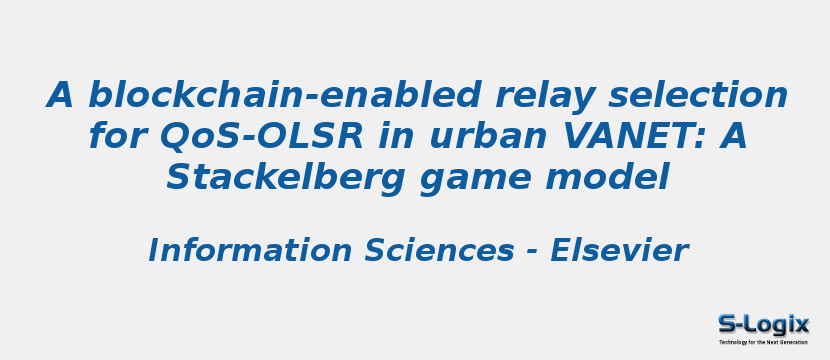Research Area: Vehicular Ad Hoc Networks
In this paper, a blockchain-enabled Stackelberg game model is proposed for the Quality-of-Service Optimized Link State Routing (QoS-OLSR) protocol in urban VANET. While QoS-OLSR protocols introduce game models, Stackelberg in specific, to select stable relays, the information exchanged by nodes and the selection process cannot be trusted. The introduction of Blockchain to VANET arose as a means for adding trust. However, existing works integrating blockchain do not fully exploit its capabilities in hosting verified reputations, selecting relays, or sharing monetary incentives to motivate cooperation of relays. Therefore, the proposed Stackelberg game model integrates off-chain QoS-OLSR protocol and designed on-chain smart contracts, which consists of two managers: Node Reputation Manager (NRM) and Relay Selection Game Manager (RSGM) to select relays. The proposed game model has three stages: 1) the role identification, 2) the off-chain follower incentive selection, and 3) the on-chain leader profit maximization. The first stage is for nodes identify their role in the game model; leader or follower. Then, the second stage allows followers (nodes) to calculate incentives for leaders (relays) based on off-chain exchanged QoS-OLSR messages including QoS and reputation. NRM allows verifying the reputations within the messages of nodes. The calculated incentives are deposited to RSGM as followers’ strategies. The third stage, executed on-chain in RSGM, generates the set of accepted followers for a leader reliably and forwards the deposited incentives to leaders. Simulations were conducted to demonstrate that the proposed game model outperforms in terms of leaders’ utility and followers’ payments while keeping the percentage of relays constant compared to the benchmark model. Furthermore, cost analysis confirms the feasibility and cost-efficiency of such a model.
Keywords:
Author(s) Name: Maha Kadadha, Hadi Otrok
Journal name: Ad Hoc Networks
Conferrence name:
Publisher name: ELSEVIER
DOI: 10.1016/j.adhoc.2021.102502
Volume Information: Volume 117, 1 June 2021, 102502
